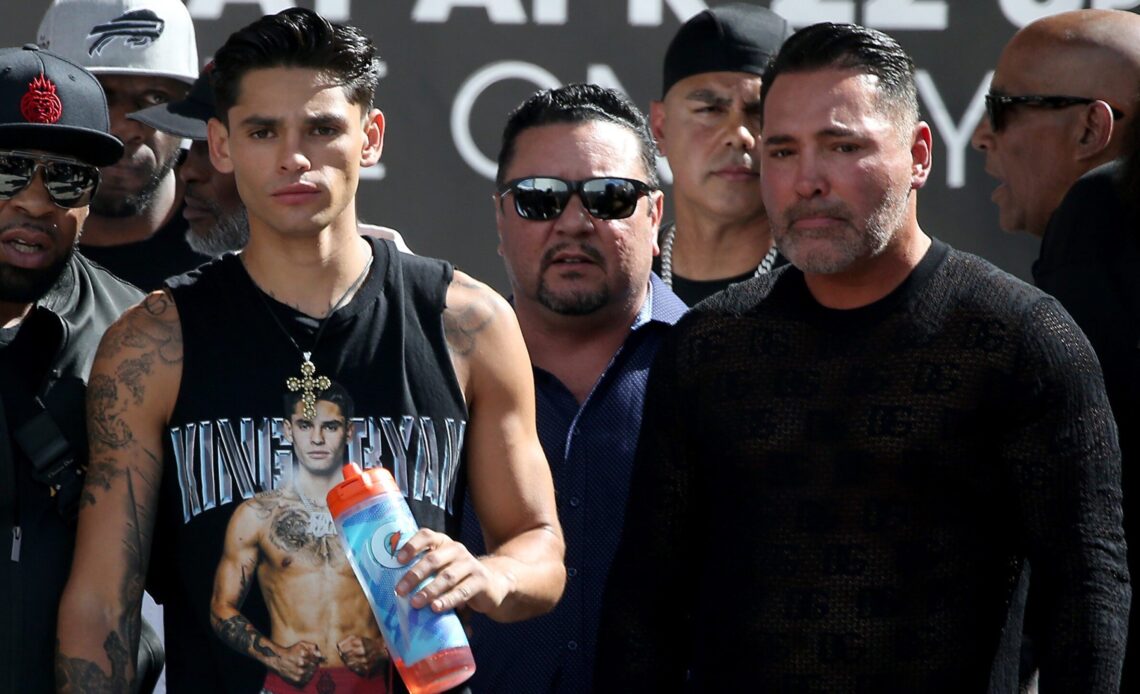In the world of professional boxing, few names shine as brightly as Ryan Garcia’s. With his lightning-fast hands, charismatic personality, and a massive social media following, Garcia has emerged as one of the sport’s most promising young talents. However, behind every rising star is often a guiding force—or in some cases, a controversial figure pulling the strings. For Ryan Garcia, that person is none other than Oscar De La Hoya, the former boxing champion turned promoter. While De La Hoya has undeniably played a pivotal role in shaping Garcia’s career, his recent plans and strategies have sparked widespread debate within the boxing community. Many now fear that these decisions could jeopardize Garcia’s future in the sport, potentially derailing what was once seen as an unstoppable trajectory.
To fully understand the gravity of this situation, it’s essential to first recognize Ryan Garcia’s journey to stardom. Unlike many fighters who come from traditional boxing backgrounds, Garcia carved out his path with a unique blend of athleticism, digital savvy, and sheer determination. Growing up in Victorville, California, he began boxing at just seven years old under the guidance of his father, Henry Garcia. His natural talent quickly became evident, earning him numerous amateur accolades before turning professional at the age of 17.
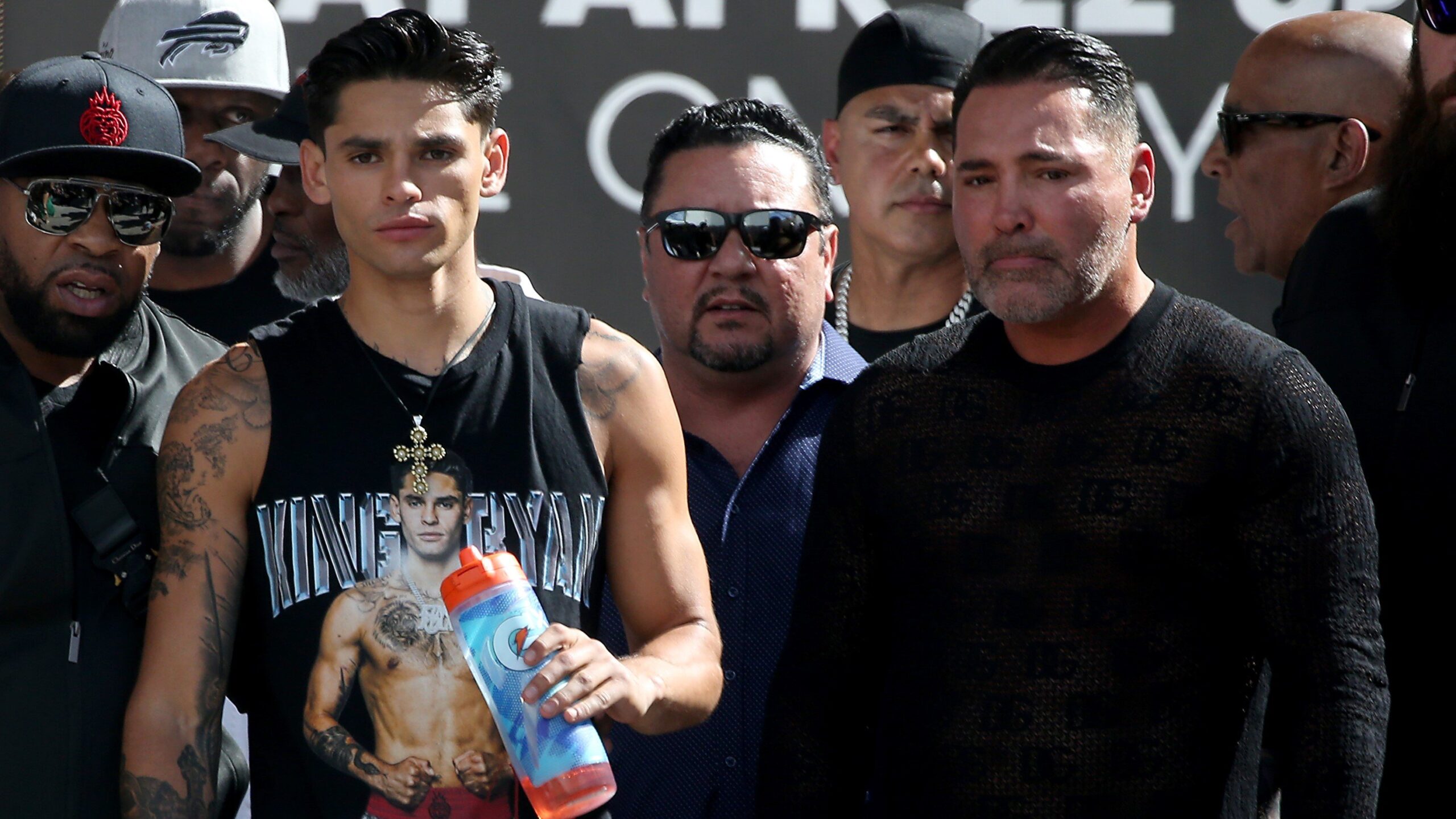
What sets Garcia apart from other boxers is not just his skill but also his ability to connect with fans on a personal level. In an era dominated by social media, Garcia has leveraged platforms like Instagram and TikTok to build a loyal fanbase that extends far beyond hardcore boxing enthusiasts. With over 12 million followers on Instagram alone, he has become a global icon, transcending the boundaries of the sport. This unprecedented reach has made him one of boxing’s most marketable athletes, attracting lucrative sponsorship deals and high-profile matchups.
However, Garcia’s rapid ascent hasn’t been without its challenges. Despite his undeniable potential, critics have questioned whether he possesses the mental toughness required to succeed against elite competition. Early in his career, skeptics dismissed him as a “social media sensation” rather than a legitimate contender. Yet, Garcia silenced many doubters with impressive victories over seasoned opponents like Francisco Fonseca and Luke Campbell. These wins solidified his status as a top lightweight contender while fueling expectations for even bigger fights down the line.
Enter Oscar De La Hoya, the man who has been instrumental in steering Garcia’s career since signing him to Golden Boy Promotions. Known affectionately as “The Golden Boy,” De La Hoya enjoyed a storied career inside the ring, winning world titles across six different weight classes. After retiring, he transitioned into promotion, founding Golden Boy Promotions in 2002. Under his leadership, the company has represented some of boxing’s biggest names, including Canelo Álvarez and Bernard Hopkins.
De La Hoya’s vision for Garcia was clear from the start: create a crossover superstar capable of appealing to both die-hard boxing fans and casual observers alike. To achieve this, he carefully curated Garcia’s early matchups, ensuring they were challenging enough to showcase his abilities yet manageable enough to avoid any setbacks. This strategy paid off handsomely, as Garcia steadily climbed the ranks while maintaining an unblemished record.
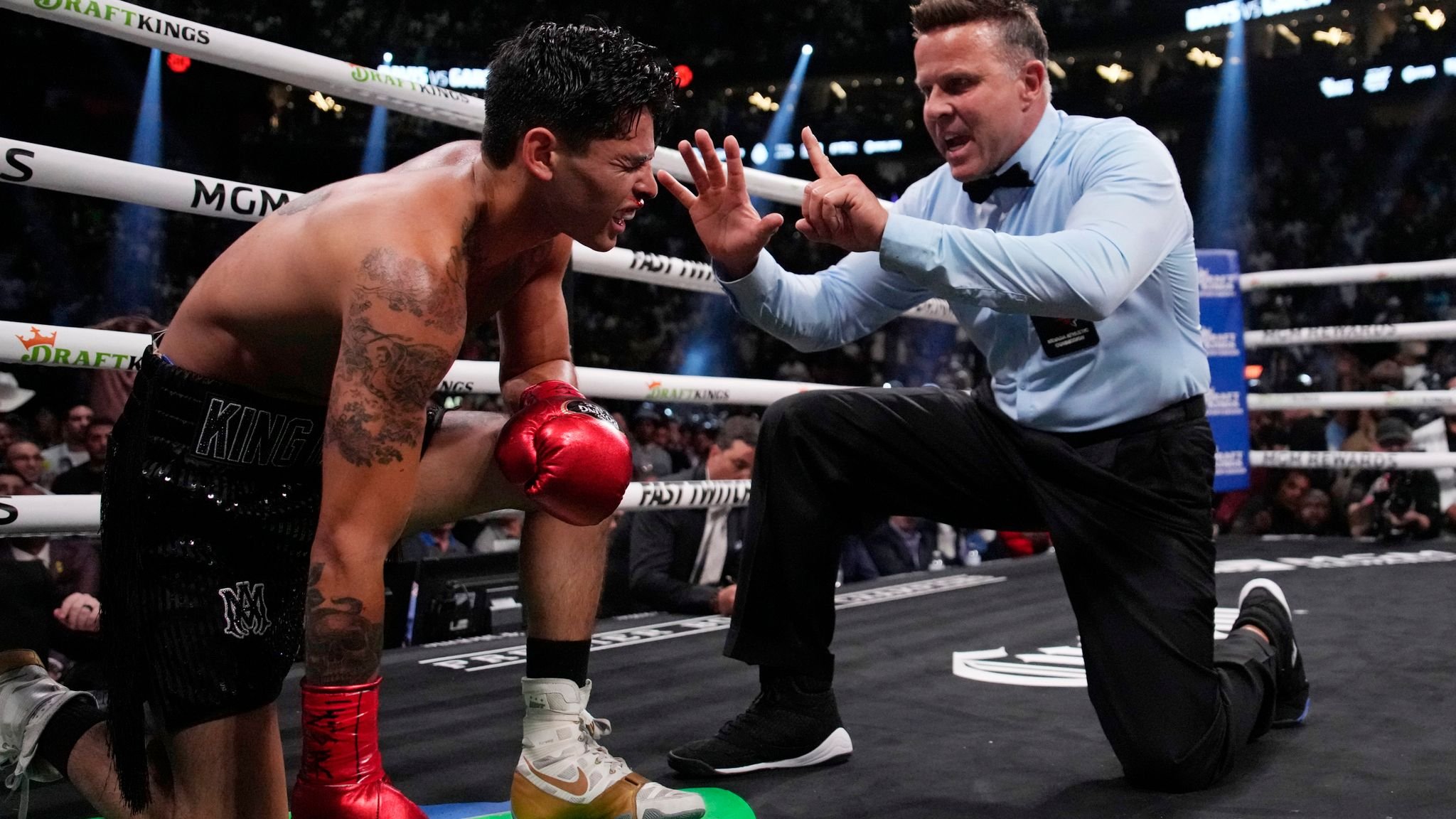
However, as Garcia’s profile grew, so too did the pressure to deliver blockbuster fights. It is here where De La Hoya’s approach has drawn increasing scrutiny. Critics argue that his pursuit of headline-grabbing bouts—often at the expense of logical progression—has placed Garcia in precarious situations. Rather than focusing on incremental growth, De La Hoya seems intent on catapulting Garcia into megafights prematurely, raising concerns about whether the young fighter is truly ready for such challenges.
One of the most contentious aspects of De La Hoya’s management style revolves around his matchmaking decisions. In recent months, there have been persistent rumors of negotiations for Garcia to face established champions like Gervonta Davis or Devin Haney. While these matchups would undoubtedly generate significant revenue and media attention, they also carry substantial risks. Both Davis and Haney are highly skilled operators with extensive experience at the highest levels of the sport. Facing either opponent without adequate preparation could result in a devastating loss for Garcia, tarnishing his reputation and undermining his confidence.
Moreover, De La Hoya’s emphasis on spectacle over substance has led to accusations that he prioritizes financial gain over Garcia’s long-term development. By pushing for marquee fights too soon, he risks exposing Garcia to opponents who may exploit weaknesses in his game. For instance, Garcia’s defensive vulnerabilities were laid bare during his bout with Luke Campbell, where he was dropped in the second round. While he ultimately prevailed via knockout, the scare served as a stark reminder of the dangers inherent in rushing a fighter’s progression.
Another area of concern is De La Hoya’s handling of Garcia’s public image. On one hand, Garcia’s outspoken nature and willingness to engage in verbal sparring with rivals have helped maintain interest in his fights. On the other hand, this approach has occasionally backfired, leading to unnecessary distractions and controversies. For example, Garcia’s feud with Gervonta Davis escalated into a war of words on social media, culminating in allegations of misogyny and homophobia. Such incidents not only damage Garcia’s brand but also divert attention away from his achievements in the ring.
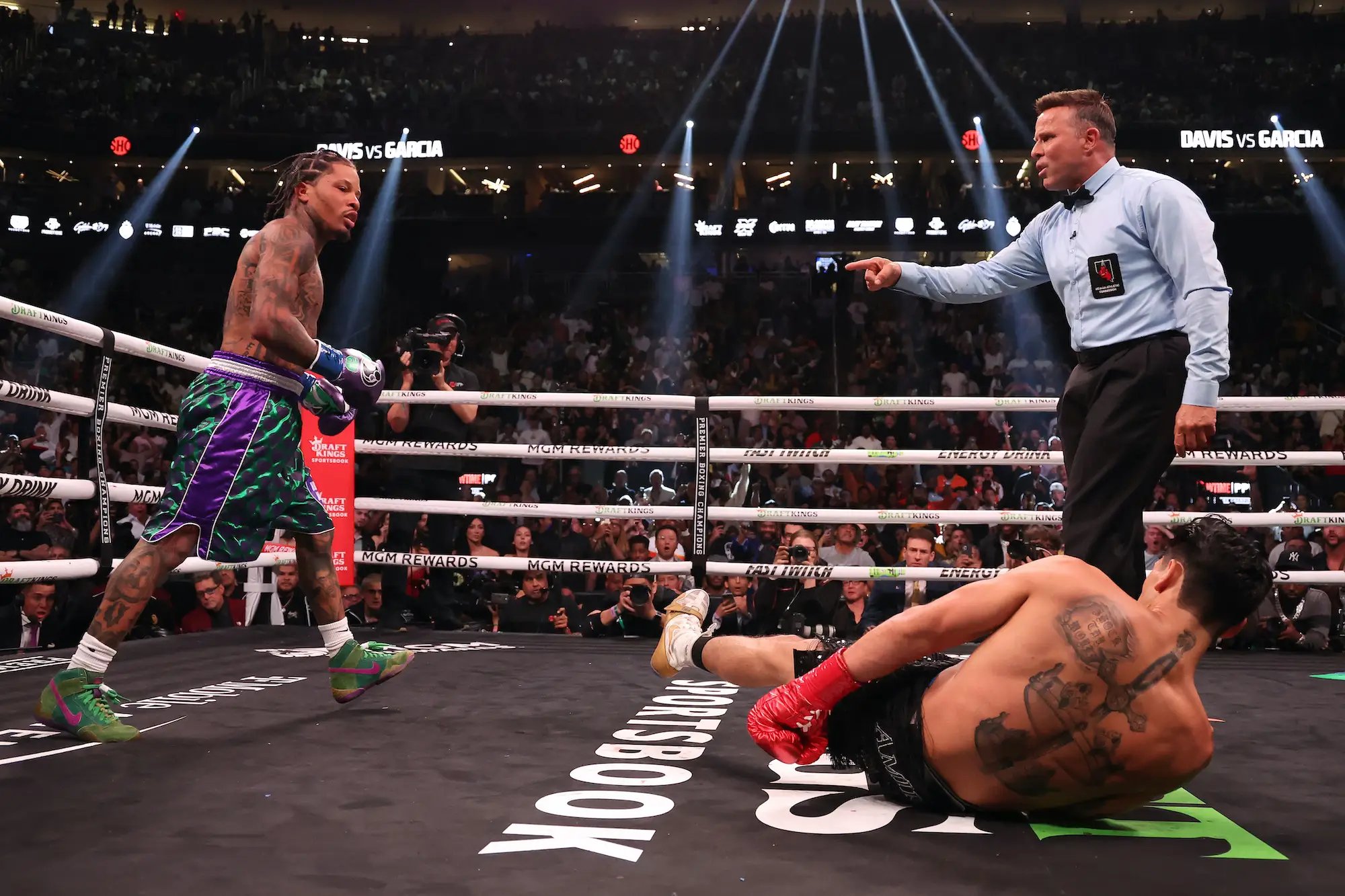
If Oscar De La Hoya continues down this path, the consequences for Ryan Garcia could be dire. At best, poorly planned matchups might lead to disappointing performances that erode his credibility as a top-tier fighter. At worst, a devastating loss could shatter his confidence and derail his career entirely. Given Garcia’s reliance on his image and persona, even a single setback could prove difficult to overcome.
Furthermore, the psychological toll of constantly being thrust into high-stakes scenarios cannot be underestimated. Boxing is as much a mental battle as it is a physical one, and placing undue pressure on a young fighter can have lasting effects. If Garcia begins to doubt his abilities or feels overwhelmed by expectations, it could impact his performance in future fights. This, in turn, would make it harder for him to secure lucrative opportunities moving forward.
There is also the risk of alienating Garcia’s fanbase. While his supporters admire his ambition and willingness to take on tough challenges, they ultimately want to see him succeed. Repeated failures or perceived mismanagement by De La Hoya could lead to disillusionment among fans, diminishing Garcia’s appeal and marketability.
Despite the criticisms leveled against Oscar De La Hoya, it’s important to acknowledge that his intentions are likely rooted in a desire to maximize Garcia’s potential. Few promoters possess the same level of insight into what it takes to become a global superstar, and De La Hoya’s track record speaks for itself. That said, striking the right balance between ambition and prudence will be crucial if Garcia is to fulfill his promise.
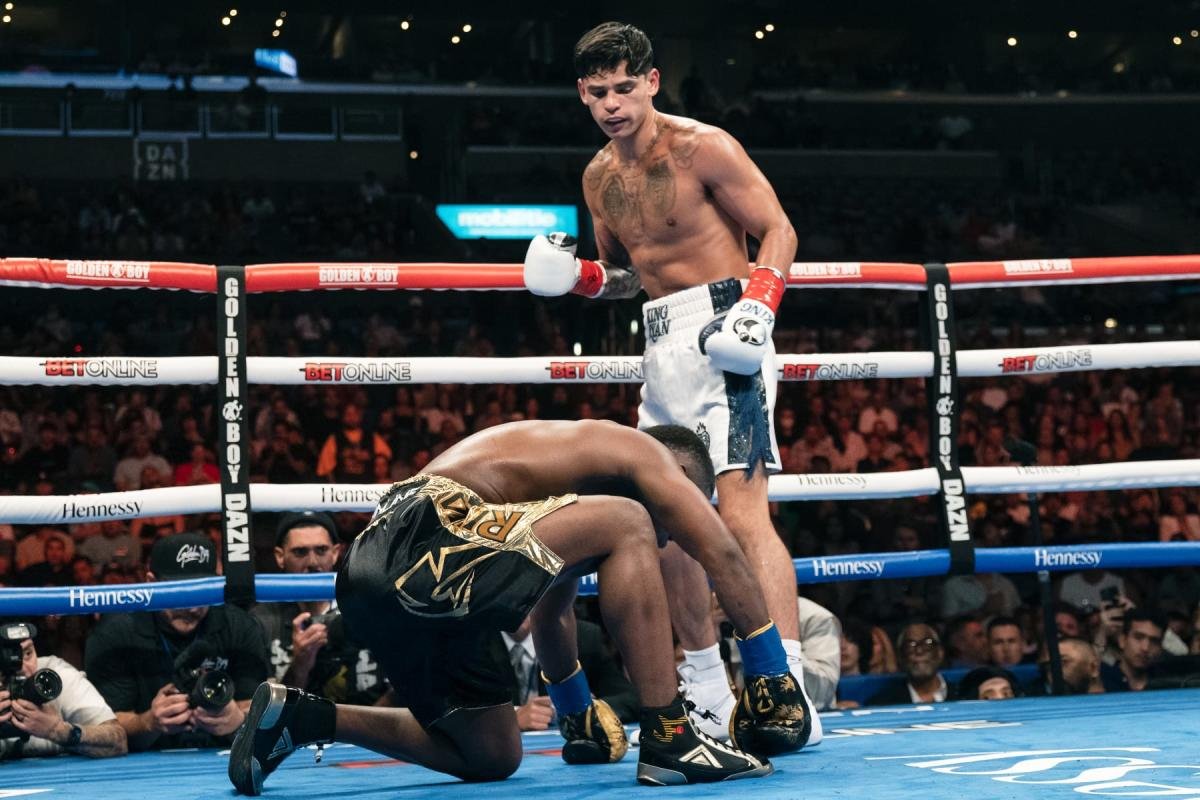
One possible solution is to adopt a more measured approach to matchmaking. Instead of jumping straight into megafights, Garcia should first consolidate his position as a legitimate champion by defending his title against credible challengers. This would allow him to refine his skills, address any lingering weaknesses, and build momentum heading into bigger showdowns.
Additionally, De La Hoya must exercise greater caution when managing Garcia’s public image. While trash talk and rivalries can generate excitement, they should never overshadow the quality of the product inside the ring. Encouraging Garcia to focus on his craft and let his performances do the talking would go a long way toward preserving his legacy.
Finally, fostering open communication between Garcia and his team will be key to ensuring alignment on goals and expectations. By working collaboratively, they can develop a strategy that prioritizes Garcia’s long-term success over short-term gains.
Ryan Garcia’s future remains bright, but it is undeniably at a crossroads. The decisions made by Oscar De La Hoya in the coming months will play a critical role in determining whether Garcia fulfills his immense potential or succumbs to the pitfalls of premature exposure. While the allure of megafights and record-breaking paydays is understandable, it is imperative to remember that careers are built on foundations of patience, discipline, and strategic planning.
For Garcia, the road ahead promises both opportunities and obstacles. By learning from past mistakes and embracing a more balanced approach, he can navigate the challenges posed by De La Hoya’s controversial strategies. Ultimately, the fate of this young star lies not only in his own hands but also in the wisdom of those entrusted with guiding him. Whether he emerges triumphant or falls victim to mismanagement remains to be seen—but one thing is certain: the boxing world will be watching closely.
